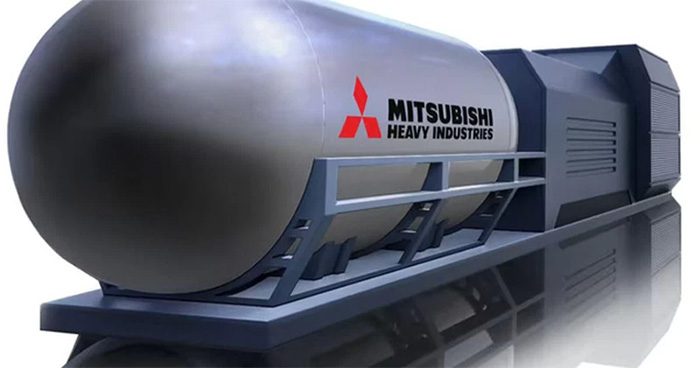The Mitsubishi Heavy Industries Corporation of Japan plans to develop and commercialize small nuclear reactors that are transportable by truck by the end of the next decade. The company aims to meet the growing demand for carbon-free energy.
With a height of 3 meters and a width of 4 meters, these micro-reactors will weigh less than 40 tons. The reactor and power generation equipment will fit neatly within a shipping container, allowing them to be transported to remote or disaster-affected areas.
They are small enough to be buried underground, minimizing the risk of accidents. This technology could also be employed in space exploration.

Micro-reactors will weigh less than 40 tons.
The micro-reactors will have a maximum output of 500 kilowatts, equivalent to 1/20 of the output of conventional nuclear reactors that produce over 1 gigawatt.
Mitsubishi plans to commercialize this technology as early as the 2030s, pending approval from the Japanese government and other authorities.
These mini-reactors will need to be manufactured with greater safety than conventional reactors, as they will operate closer to populated areas. The nuclear core, coolant, and all other equipment will be contained in sealed compartments.
Highly enriched uranium will be used as fuel and will not require replacement for about 25 years. Once the fuel is depleted, the entire reactor can be decommissioned. The reactors can also be installed underground to reduce risks from natural disasters and terrorism.
Mitsubishi will also mitigate the risk of coolant-related disasters. Instead of using liquid coolant, these mobile reactors will utilize solid graphite materials with high thermal conductivity.
Graphite surrounds the core and transfers heat to the power generation system during normal operations. In the event of an incident, excessive heat from the core will be dissipated through the natural environment.
Each micro-reactor will cost tens of millions of USD, significantly lower than the 6 billion USD or more needed to build a 1.2-gigawatt nuclear power plant.
The cost to produce 1 kilowatt-hour from truck-mounted nuclear reactors will be higher than that of conventional reactors. However, it will be competitive with current costs for supplying power to isolated islands. These reactors will allow remote areas to access affordable, carbon-free energy.
Nuclear energy, once considered “poisoning the world”, is now viewed differently in the context of global decarbonization efforts. This year, the European Union proposed designating nuclear power and natural gas as alternative low-carbon energy solutions.


















































